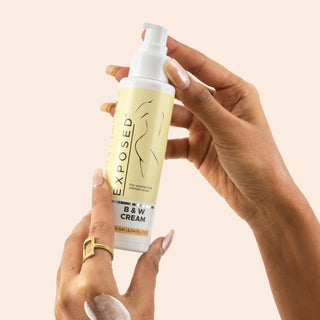Pelvis is a region between your hips that holds your reproductive organs. A weak pelvic floor may lead to serious health concerns, like the inability to control your bowels or bladder. That’s where Kegel exercises come into the role. Kegels are simple clench-and-release exercises that help strengthen your pelvic muscles.
The best part about these exercises is that they don’t require any particular setup or space, and you can perform them anytime and anywhere. Wondering how Kegels work and whether they are worth putting effort into? This guide outlines all vital aspects of Kegel exercises and explains how it works and benefits your pelvic muscles.
What are the Benefits of Kegel Exercises?
Kegel exercises have become a part of mainstream communication among women these days. These exercises are widely known for strengthening your pelvic floor muscles and are thus sometimes known as pelvic floor exercises.
However, the benefit of Kegels isn’t limited to supporting and strengthening pelvic muscles. Performing these exercises can support the low back and hip pain, manage bladder leaks and pelvic organ prolapse, and even improve physical intimacy.
Below are mentioned some benefits of Kegels on overall health and wellness.
Kegels involve tightening and then releasing the muscles in your pelvic floor to strengthen them. Many factors can weaken the pelvic floor in women, including pregnancy, childbirth, aging, and weight gain. These exercises give better control over your bladder and bowels, thus preventing your pelvic muscles from weakening.
POP, or Pelvic Organ Prolapse, is a condition in which one or more of the pelvic organs press into the walls of the vagina. Performing Kegels regularly can help strengthen the pelvic floor muscles, thus improving support for pelvic organs.
Although there’s no scientific evidence for this benefit, many healthcare experts believe that Kegels help tightens the genital passage, further improving the physical relationships, especially after pregnancy and childbirth.
Kegels promote the strengthening of pelvic muscles and improve blood flow to the pelvic region. Improved blood circulation increases arousal and the intensity of orgasms.
Prolonged sitting after childbirth and stretching of your abdominal muscles during pregnancy can wreak havoc on your body. Therefore, it is advised to include Kegels in your daily route to mitigate some of the effects. These exercises tone the pelvic floor, further reducing the risk of pelvic organ prolapse and incontinence.
How does Kegel Exercises Work?
While Kegel exercises are beneficial and help tone your pelvic floor muscles, it’s important to start them right away to avoid any mishaps. Doing too many Kegels or opting for the wrong position can cause your muscles to become too tense or tight.
Hence, start by understanding what Kegel exercises you should do and follow the necessary instructions to get the desired outcome.
Identifying the right set of muscles can be tricky, especially when you start these exercises for the very first time. You can locate your pelvic floor muscles in multiple ways.
Place a clean finger inside your vagina and tighten your vaginal muscles around the finger. Or else you can also try stopping your urine mid-flow to locate pelvic muscles. Talk to a gynecologist if you still aren’t sure about the right muscles.
To do Kegels, squeeze your pelvic floor muscles for around 5 seconds and then release for another 5 seconds. Do this up to 5 times in a row. Once you build strength, you can raise your bar to 10 times.
While Kegels aren’t harmful, it’s advised to start things slowly and take your time to master the technique. Don’t go for 5 to 10 sets in the beginning. Work up to one set of 5 Kegels two to three times daily and build your strength over time.
For desired results, you must focus on tightening your pelvic muscles only. Be sure not to flex the muscles in your thighs, abdomen, or buttocks when performing Kegels; otherwise, you might feel pain in your abdomen or back after a session. Avoid holding your breath during contractions and relaxation. Instead, breathe freely during the exercise and reap the best outcome.
Although Kegels can be performed anywhere and anytime, it doesn’t mean you stretch its limits and overdo them. If you feel pain in your abdomen or back after a Kegal session, it’s a sign that you aren’t doing them correctly.
Also, if your pelvic floor muscles are too hard, they’ll become tired and unable to fulfill their necessary functions. Hence, start things slowly, don’t stretch your limits, and focus on the right place to yield positive results.
Summing Up
Kegels are simple and effective exercises to make your pelvic muscles stronger. Besides, these exercises can help develop better back and hip support, reduce the chances of pelvic organ collapse, manage bladder leakage, and improve the ability and intensity of orgasm.
However, be careful when performing Kegels, and follow the approach consistently to benefit overall health and well-being.



